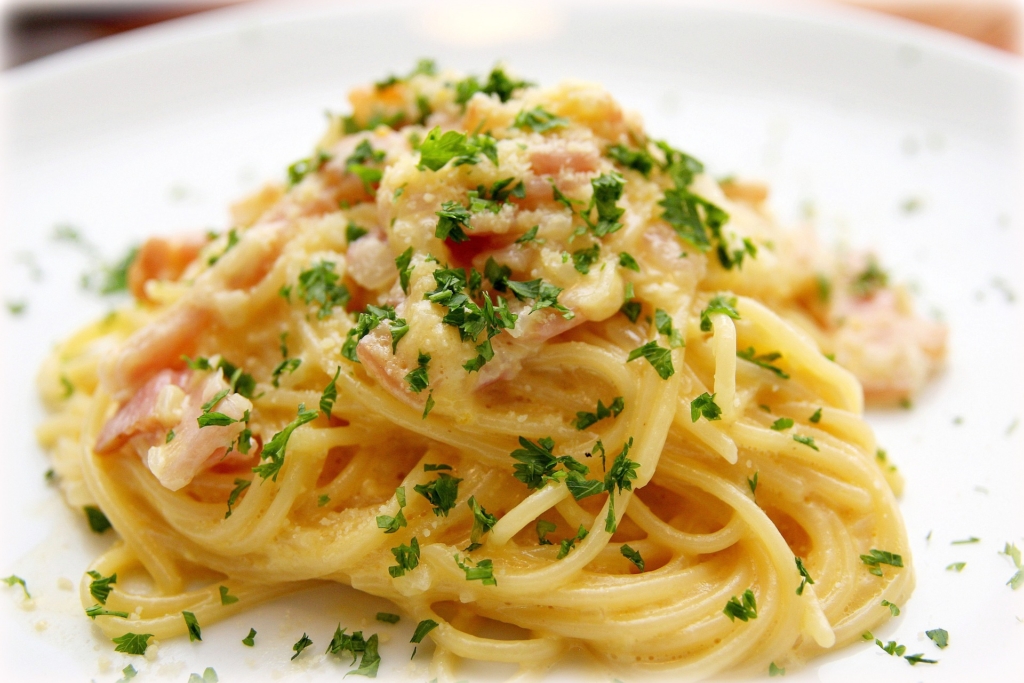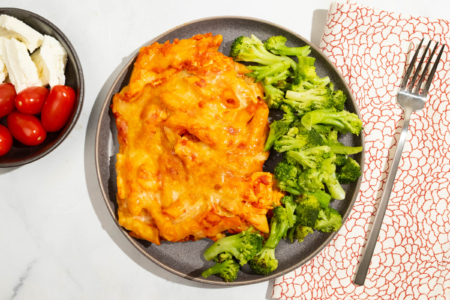Much like bacon and pancetta, guanciale is a cured fatty cut of pork. However, instead of coming from the belly meat, guanciale comes from the jowl, or cheek, of the pig. The meat is seasoned and flavored depending on the region in Italy where it comes from, and then aged for approximately three months. Look for guanciale at gourmet food stores or specialty italian shops.
Flavor

The aging process during production makes for a more developed and pungent flavor. And when it comes to texture, the fat becomes soft after aging and easily melts when cooked. This added richness from the melted fat can be seen in traditional Roman dishes such as Pasta Carbonara and Amatriciana Sauce. Guanciale is typically sold either pre sliced or in a chunk ready for cutting at home.
Storage and Usage
In order to maintain freshness, wrap guanciale in plastic or place in a ziploc bag and keep in the fridge. For long term storage, freeze in smaller portions for easy thawing.
Guanciale can be fried in a skillet for a crispy addition to pastas or salads. Simply dice the meat into ¼” cubes and cook without extra oil in a skillet over medium low heat until golden brown, stirring frequently to ensure even cooking. Thinly sliced guanciale can also be eaten on top of toasted bread for a truly Italian appetizer or mid-day snack.
Feature Image: Popo le Chien Wikipedia Commons (CC BY-SA 4.0)



